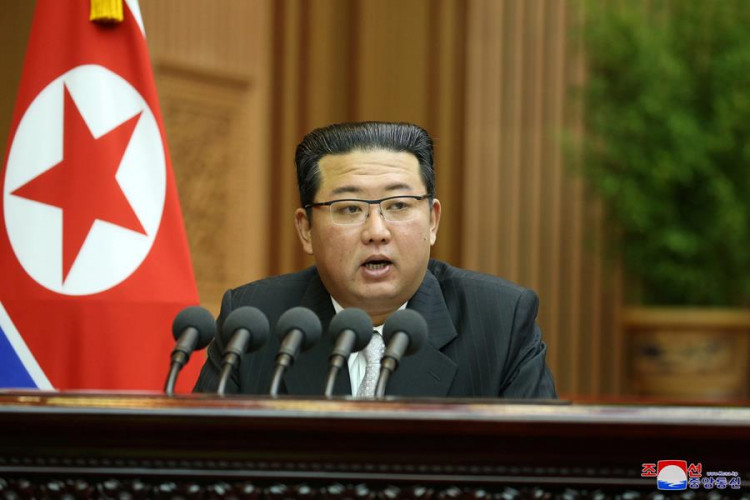North Korea announced on Thursday that it had successfully conducted a significant test aimed at developing missiles capable of carrying multiple warheads. The claim, made through the state news agency KCNA, was quickly dismissed by South Korea as a deceptive attempt to cover up a failed launch.
The North Korean report detailed that the test was conducted using the first-stage, solid-fuel engine of an intermediate-range ballistic missile. According to KCNA, the missile successfully separated its warheads, which were accurately guided to three preset targets, marking a step towards mastering Multiple Independently Targetable Reentry Vehicle (MIRV) technology. "The purpose was to secure the capability to destroy individual targets using multiple warheads," the report stated.
In contrast, South Korea's military provided a starkly different assessment. A joint analysis by South Korean and U.S. authorities suggested that the missile exploded during its initial stage of flight. "Today North Korea disclosed something, but we believe it's simply a means of deception and exaggeration," stated Lee Sung-joon, spokesperson for South Korea's Joint Chiefs of Staff. Lee also suggested that the photos released by North Korea purporting to be from the test were likely fabricated or recycled from previous launches.
The divergent views on the missile test come amidst heightened tensions on the Korean Peninsula. South Korea, the United States, and Japan condemned the launch, labeling it a violation of U.N. Security Council resolutions and a serious threat to regional stability. In response to the provocation, the three countries commenced large-scale joint military drills, involving navy destroyers, fighter jets, and the nuclear-powered U.S. aircraft carrier Theodore Roosevelt. These "Freedom Edge" exercises aim to bolster defenses against missile, submarine, and air attacks.
The backdrop to these tensions includes a recent summit between North Korean leader Kim Jong Un and Russian President Vladimir Putin, where the two leaders signed a mutual defense pact. South Korean President Yoon Suk Yeol dismissed the alliance as "anachronistic," reflecting the complex geopolitical dynamics in the region.
North Korea's missile test marks its first known attempt at developing a multiwarhead missile, a technology coveted by Kim Jong Un to potentially overwhelm U.S. and South Korean missile defenses. If North Korea's claims are verified, it would signify a significant leap in its missile capabilities. However, South Korea remains skeptical. Lee Sung Joon highlighted that a proper MIRV test involves the sequential separation of warheads, but the missile in question failed at the initial stage. He noted that North Korean photos showed a missile similar to the liquid-fuel Hwasong-17 ICBM tested in March 2023.
Experts are divided on the implications of the test. Ankit Panda, a senior analyst at the Carnegie Endowment for International Peace, suggested that the test appeared to be an initial evaluation of key subsystems necessary for developing a functional MIRV. "I had been anticipating a MIRV test for some time now, as this was one of the last remaining items on Kim Jong Un's modernization wish list from the 8th Party Congress back in January 2021," Panda said. He expects successive tests to follow, ultimately leading to the launch of an intercontinental ballistic missile on a lofted trajectory.
Despite the skepticism from South Korea, the presence of a decoy in the test was noted as significant. However, South Korea's military has yet to confirm whether North Korea possesses the technology to build such decoys effectively. "North Korea has made no secret of its intention to stress and overcome U.S. homeland missile defenses," Panda added. "Decoys will assist in that endeavor and will likely be incorporated onto their single-warhead missiles as well."
The missile test comes at a time of increased military activity in the region. The South Korea-U.S.-Japan joint training exercises began on Thursday, focusing on missile defense, anti-submarine warfare, and maritime interdiction. This coordinated display of military strength underscores the allies' commitment to countering North Korean provocations.
In addition to missile tests, North Korea has recently engaged in other provocative actions, such as sending trash-carrying balloons toward South Korea. This prompted South Korea to conduct propaganda loudspeaker broadcasts at the border for the first time in years, a move it threatens to repeat if the balloon incidents continue.






